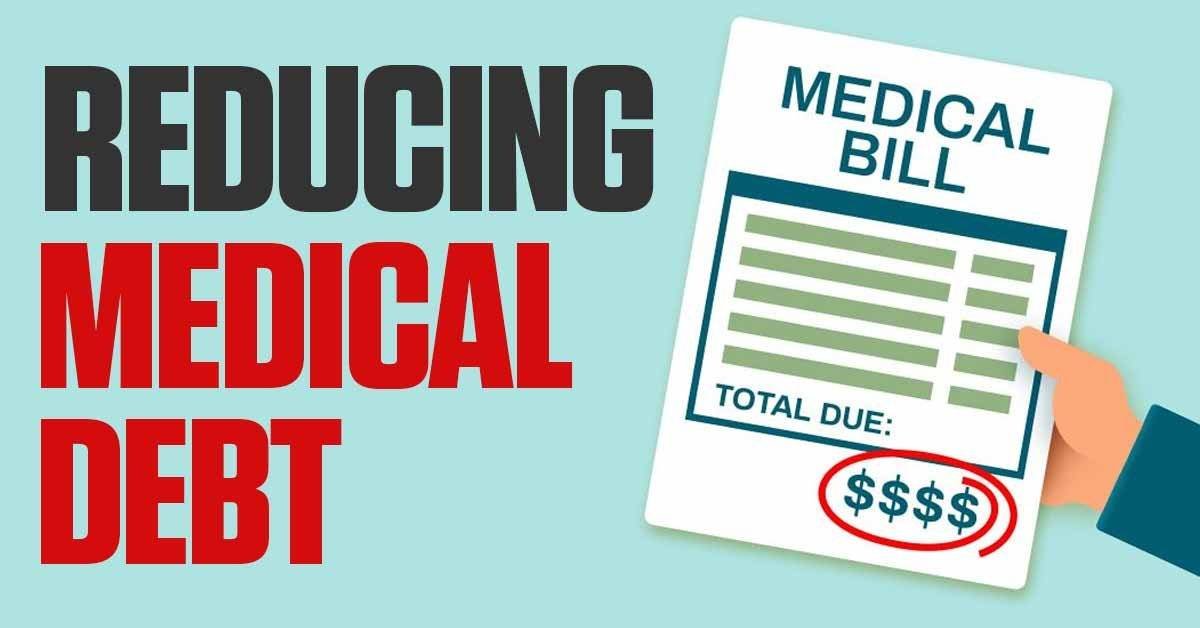Medical debt can be overwhelming and stressful, impacting your financial health and peace of mind. Whether it’s from an unexpected emergency, a chronic condition, or high deductibles, medical debt is a reality for many people. Fortunately, there are strategies you can use to reduce and manage this debt effectively. Here’s a detailed guide to help you navigate and alleviate medical debt.
1. Review and Understand Your Medical Bills
The first step in tackling medical debt is to thoroughly review your bills to ensure accuracy. Medical billing errors are common, so take the time to:
- Request an Itemized Bill: Ask your healthcare provider for an itemized bill that breaks down each charge. This makes it easier to spot any errors or unnecessary charges.
- Check for Errors: Look for duplicate charges, services you didn’t receive, or incorrect billing codes. If you find an error, contact your healthcare provider or billing department to correct it.
- Compare with Insurance Explanation of Benefits (EOB): Ensure that the charges on your bill align with what your insurance has covered according to the EOB.
2. Negotiate Your Medical Bills
If your medical bills are accurate but still unaffordable, consider negotiating with your healthcare provider. Here’s how:
- Ask for a Discount: Some healthcare providers offer discounts for paying in full or within a certain time frame. Ask if any discounts are available.
- Request a Lower Rate: If you don’t qualify for a discount, negotiate for a lower rate. Explain your financial situation and ask if the provider can reduce the bill to a level you can afford.
- Inquire About Financial Assistance Programs: Many hospitals and healthcare providers offer financial assistance programs for low-income patients. Apply for these programs to see if you qualify for reduced charges or free care.
3. Set Up a Payment Plan
If you can’t pay your medical bill in full, setting up a payment plan is a viable option. Most healthcare providers are willing to work with you to create a manageable payment plan. When setting up a plan:
- Be Honest About What You Can Afford: Don’t agree to a payment plan that’s beyond your means. Provide an amount you can realistically pay each month.
- Get the Agreement in Writing: Ensure that the payment plan terms, including the payment amount and due date, are documented in writing.
- Avoid High-Interest Payment Plans: Some healthcare providers or third-party companies may offer payment plans with high interest rates. Avoid these if possible, as they can increase your overall debt.
4. Consider Medical Debt Forgiveness
If you’re facing extreme financial hardship, you may qualify for medical debt forgiveness. Here are some options to explore:
- Nonprofit Hospitals: Many nonprofit hospitals have charity care programs that can forgive part or all of your medical debt based on your income and financial situation. Contact the hospital’s billing department to inquire about these programs.
- Debt Forgiveness Programs: Some organizations and charities offer medical debt forgiveness or grants. Research available programs in your area or consult a financial advisor who specializes in medical debt.
5. Use Medical Credit Cards Cautiously
Medical credit cards, like CareCredit, can be used to finance healthcare costs. While these cards offer interest-free periods, they can come with high interest rates if you don’t pay off the balance within the promotional period. Use medical credit cards with caution and only if you’re confident you can pay off the debt before interest accrues.
6. Explore Assistance Programs and Resources
There are various assistance programs and resources available to help manage and reduce medical debt:
- Government Assistance Programs: Programs like Medicaid, CHIP, and state-specific health assistance can help cover medical costs if you qualify.
- Nonprofit Organizations: Organizations like RIP Medical Debt and the Patient Advocate Foundation offer resources and assistance to help reduce or eliminate medical debt.
- Prescription Assistance Programs: If prescription costs are contributing to your debt, explore programs like GoodRx or manufacturer assistance programs that offer discounts on medications.
7. Use a Health Savings Account (HSA) or Flexible Spending Account (FSA)
If you have an HSA or FSA, use these funds to pay for medical expenses. These accounts allow you to pay for qualifying medical expenses with pre-tax dollars, effectively reducing your out-of-pocket costs.
8. Prioritize Your Debt Repayment
If you have multiple medical debts, prioritize them based on factors like interest rates, payment terms, and your financial situation. Consider using strategies like the snowball method (paying off the smallest debt first) or the avalanche method (paying off the highest interest debt first) to reduce your overall debt more efficiently.
9. Protect Your Credit Score
Unpaid medical debt can negatively impact your credit score. To protect your credit:
- Pay at Least the Minimum Amount Due: Always make at least the minimum payment on time to avoid late fees and damage to your credit score.
- Communicate with Creditors: If you’re struggling to make payments, communicate with your healthcare provider or the collection agency. They may offer more flexible payment options or temporary relief.
10. Seek Professional Help
If your medical debt is overwhelming and you’re unsure where to start, consider seeking help from a professional:
- Credit Counselors: A credit counselor can help you create a budget, negotiate with creditors, and develop a debt management plan.
- Medical Billing Advocates: These professionals can help you review your medical bills, negotiate with providers, and find financial assistance programs.
- Bankruptcy Consideration: In extreme cases, bankruptcy may be an option to discharge medical debt. Consult with a bankruptcy attorney to understand the implications.
Conclusion
Medical debt can be a significant financial burden, but with the right strategies, you can reduce and manage it effectively. Start by reviewing your bills for accuracy, negotiate with healthcare providers, and set up manageable payment plans. Explore financial assistance programs and prioritize your debt repayment to regain control of your finances. Remember, seeking professional help is a viable option if you’re feeling overwhelmed.
